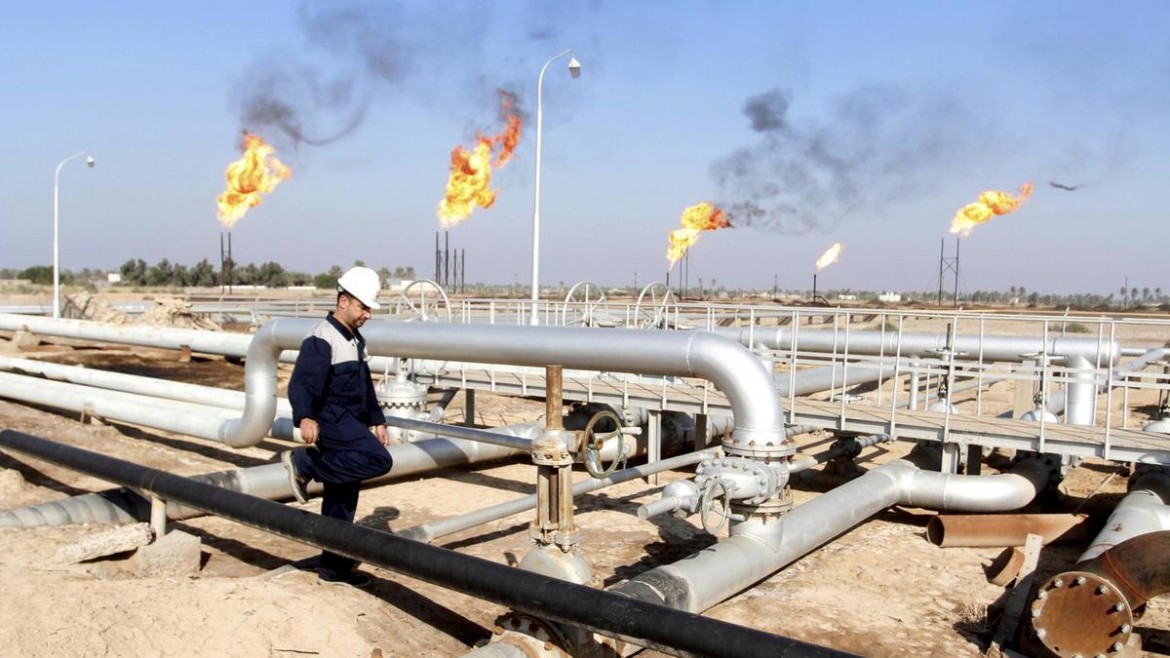Report
ENI is Italy’s worst contributor to the climate emergency
In the last three years, the world’s biggest oil and gas companies have invested $168 billion to explore new fields for extraction, according to a report from environmental groups.

The dirty truth about the fossil fuel industry—this is what is shown in the extensive database made public on Thursday at the COP26 in Glasgow by the German NGO Urgewald, along with other international civil society organizations including Greenpeace Italy and ReCommon.
The study analyzes 887 oil and gas companies, which account for more than 95% of global hydrocarbon production. While respected institutions such as the International Energy Agency are calling for oil and gas to be left in the ground, the report shows that in the last three years, the industry’s big players have invested a staggering $168 billion to explore new fields, with China’s PetroChina ($6 billion) and China National Offshore Corporation ($2.8 billion) leading the pack, with the Anglo-Dutch Shell ($2.4 billion) following closely behind. This frantic exploration then turns into barrels being produced. Although many companies fail to provide transparency, Urgewald found that 506 companies are in the process of adding at least 190 billion barrels of oil over a period of one to seven years. The most active in this respect are Qatar Energy (20 billion), Russia’s Gazprom (17 billion) and Saudi Aramco (15 billion).
The scenario is also alarming on the midstream front, in terms of infrastructure: there are currently 211,849 kilometers of oil and gas pipelines under development. If these pipes were assembled into a skyward structure, they would reach halfway between the Earth and the Moon. The top five oil and gas pipeline companies are Gazprom, PipeChina, Sinopec, China National Petroleum Corporation and India’s Gail.
According to the report, the Italian company ENI is in the top 20 oil and gas producers, and, through its subsidiary Vår Energi, it is among the top ten companies exploiting the resources of the Arctic region, especially with oil platforms in the Barents Sea. While the risks associated with the production of hydrocarbons are common at all latitudes, in the Arctic they increase exponentially: the extreme conditions only increase the possibility of spills and accidents, threatening already fragile ecosystems. In addition, permafrost is thawing faster and faster on land, and so are methane deposits at sea, which risks releasing enormous amounts of greenhouse gases into the atmosphere.
“ENI is confirmed to be the worst Italian company in terms of impacts on the planet’s climate,” stresses Luca Iacoboni, Head of Energy and Climate at Greenpeace Italy. He sounds the alarm: “In the coming decades, it still intends to continue to search for, extract, sell and burn fossil gas and oil, even increasing production in the years to come.”
Cross-referencing the database with the financial data in their possession, Greenpeace and ReCommon are denouncing the bank Intesa Sanpaolo as the number one enemy of the climate in Italy. In 2020 alone, the Turin-based bank invested in six of the eight fossil fuel companies that appear in all the three main categories of the research presented at COP26, namely the top 20 major hydrocarbon producers, the top 20 of those who plan to expand their business and the top 20 of those who have spent the most money in exploring new hydrocarbon sources.
“ExxonMobil, Shell, TotalEnergies, BP, Chevron and Equinor have benefited from investments amounting to €604 million from Intesa Sanpaolo,” explains Simone Ogno from ReCommon, adding that in 2020 alone, Italy’s leading bank granted ENI loans of €866 million and investments of €183 million. A partnership that is anything but good for the climate.
Originally published at https://ilmanifesto.it/negli-ultimi-3-anni-investiti-168-miliardi-per-nuove-estrazioni-di-gas-e-petrolio/ on 2021-11-05
